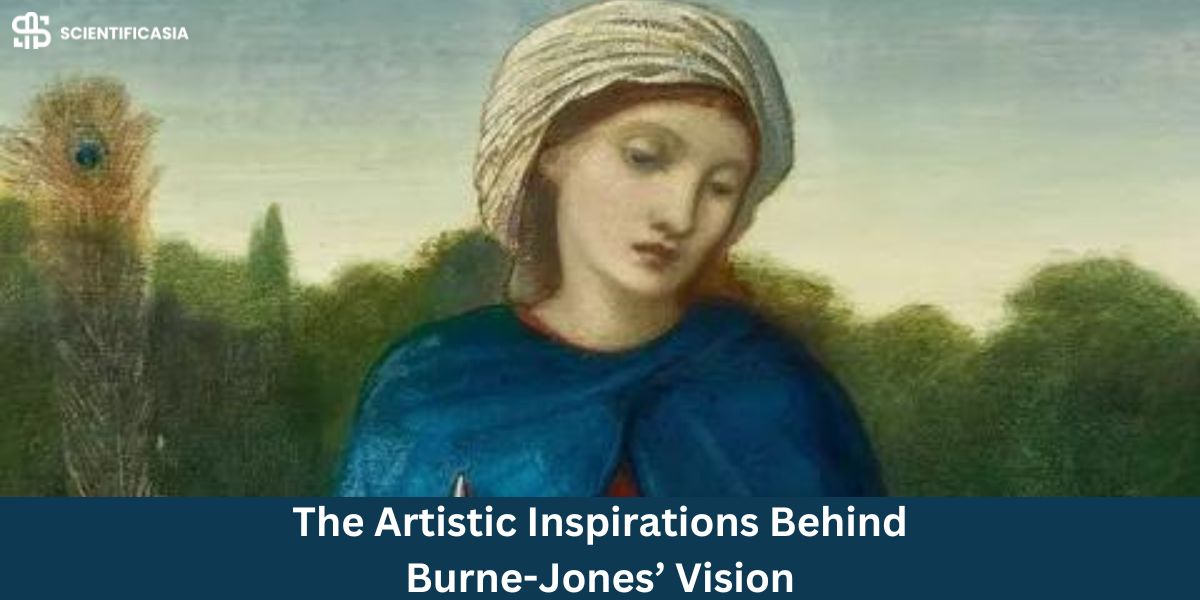Sir Edward Coley Burne-Jones was a vital figure in the Victorian craftsmanship scene, prestigious for his multifaceted and reminiscent works. His imaginative vision was formed by an intersection of impacts crossing middle age sentiment, Renaissance workmanship, contemporary writing, and individual connections. Understanding these different motivations gives further knowledge into his magnum opuses, such as “The Fall of Lucifer” painting.
Medieval Romance and Mythology
Burne-Jones’ interest with middle age sentiment and folklore was a foundation of his creative vision. This interest was ignited during his investigations at Oxford, where he was profoundly impacted by the restoration of middle age topics. The middle age time, with its rich embroidery of chivalric stories and legendary accounts, gave a ripe ground to his creative mind. Works like “The Briar Rose” series distinctively represent his inclination for middle age themes, depicting scenes pervaded with a feeling of immortal charm and supernatural excellence.
The Pre-Raphaelite Brotherhood
Burne-Jones’ scholarly excursion was significantly impacted by his associations with the Pre-Raphaelite An association, a gathering devoted to making sense of the mechanical mental condition of the Mannerist specialists who succeeded Raphael and Angelo. This fraternity, helped to establish by Dante Gabriel Rossetti, William Holman Chase, and John Everett Millais, looked to get back to the detail, variety, and complex organizations of Quattrocento Italian workmanship.
Under Rossetti’s mentorship, Burne-Jones taken on a fastidious way to deal with detail and a distinctive variety range, signs of the Pre-Raphaelite style. This impact is obvious in his careful meticulousness and the ethereal nature of his subjects, as found in “The Brilliant Steps” and “The Boggling of Merlin.”
Renaissance Art
The influence of the Renaissance, especially crafted by Sandro Botticelli and Michelangelo, is undeniable in Burne-Jones’ specialty. During his movements in Italy, Burne-Jones was charmed by the Renaissance bosses’ utilization of structure, sythesis, and legendary topic. Botticelli’s “Primavera” and “The Introduction of Venus” lastingly affected Burne-Jones, motivating his own investigation of fanciful subjects and his quest for admired excellence.
Burne-Jones’ painting “The Fall of Lucifer” mirrors this Renaissance motivation through its emotional structure and the sculptural nature of its figures, suggestive of Michelangelo’s works. The composition’s depiction of Lucifer’s shocking drop is mixed with a feeling of greatness and profound profundity that repeats the.
Literary Influences
Literature played a crucial role in shaping Burne-Jones’ creative vision. Crafted by Geoffrey Chaucer, John Milton, and the Heartfelt writers, especially Alfred Master Tennyson, gave a rich wellspring of motivation. Chaucer’s “Canterbury Stories” and Tennyson’s “Idylls of the Ruler” offered story structures that Burne-Jones converted into visual structure.
Milton’s “Paradise Lost” was particularly powerful, giving the topical material to “The Fall of Lucifer” painting. The incredible sonnet’s investigation of resistance, fall, and reclamation resounded with Burne-Jones, who portrayed Lucifer not only as an image of malevolence but rather as an unfortunate figure exemplifying the intricacies of human inclination and heavenly equity.
Personal Relationships and Collaborations
Burne-Jones’ personal relationships and coordinated efforts altogether impacted his work. His long lasting companionship with William Morris, an individual craftsman and organizer behind Human expression and Specialties Development, was especially significant. Together, they chipped away at various ventures that mixed workmanship and configuration, including stained glass windows, woven artworks, and book outlines.
Morris’ emphasis on craftsmanship and his communist standards likewise impacted Burne-Jones’ way of dealing with workmanship, encouraging confidence in the characteristic worth of excellence and the significance of open craftsmanship. This cooperation is encapsulated in their work for the Kelmscott Press, where Burne-Jones delineated Morris’ wonderful works, making complicated plans that mixed text and picture amicably.
The Spiritual and the Sublime
Burne-Jones was likewise profoundly impacted by the otherworldly and the superb, ideas that penetrate a lot of his work. His investigation of profound subjects is clear in his various strict artworks, for example, “The Veneration of the Magi” and “The Annunciation.”
His interest in the sublime, a concept advocated by Edmund Burke, is reflected in his portrayal of emotional and amazing scenes. “The Fall of Lucifer” painting is a quintessential model, where the exchange of light and shadow, combined with the unique creation, inspires a feeling of the superb, catching the watcher’s creative mind and feelings.
Reproductions of Burne-Jones’ Paintings
The enduring appeal of Burne-Jones’ work has prompted the far and wide proliferation of his artworks. Great proliferations permit craftsmanship fans to see the value in the perplexing subtleties and lively shades of Burne-Jones’ firsts. These generations are not just a demonstration of Burne-Jones’ enduring heritage yet in addition a method for making his specialty open to a more extensive crowd. For those enthralled by his portrayal of fanciful and scriptural subjects, getting a propagation of “The Fall of Lucifer” painting offers a substantial association with Burne-Jones’ imaginative vision.
Conclusion
Edward Burne-Jones’ artistic vision was a rich embroidery woven from assorted impacts, including middle-age sentiment, Renaissance craftsmanship, abstract works, and individual joint efforts. His capacity to blend these components into an extraordinary and convincing visual language has made a permanent imprint on the universe of craftsmanship. Through his careful craftsmanship and creative synthesis, Burne-Jones proceeds to rouse and enthrall crowds, guaranteeing his place as an illuminating presence in the pantheon of extraordinary specialists.
Read more:
Exploring The Importance Of Spatial Awareness In Early Childhood Education











